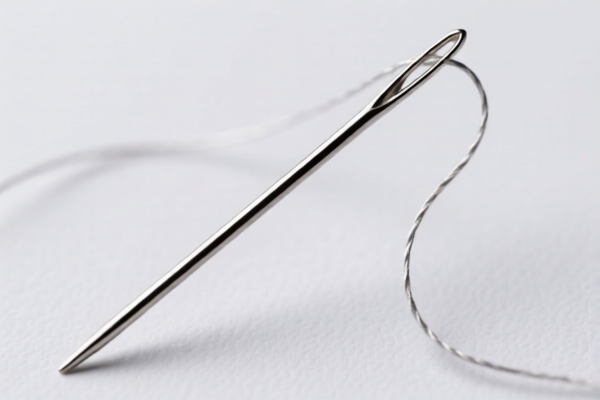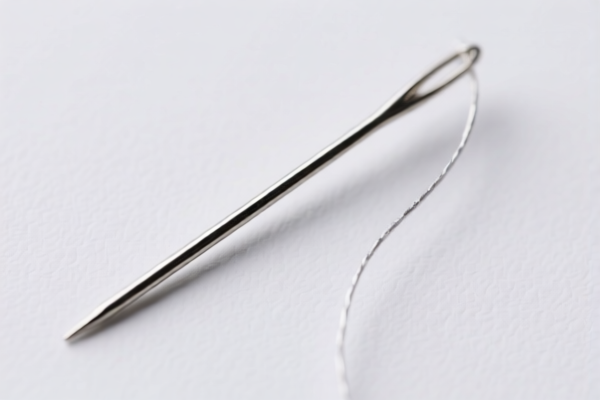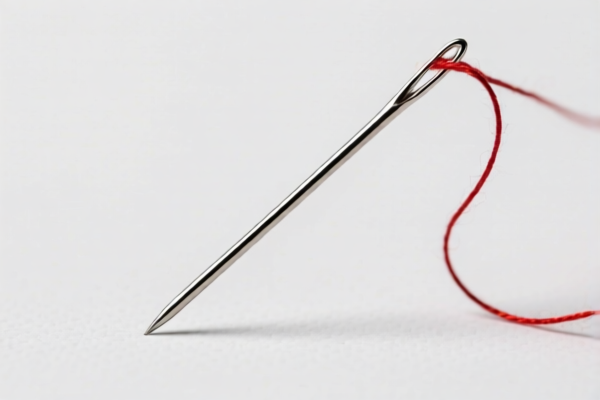| HS Code | Official Doc | Tariff Rate | Origin | Destination | Effective Date |
|---|---|---|---|---|---|
| 8305906000 | Doc | 43.2% | CN | US | 2025-05-12 |
| 8305903050 | Doc | 30.0% | CN | US | 2025-05-12 |
| 9017800000 | Doc | 60.3% | CN | US | 2025-05-12 |
| 8205513030 | Doc | 58.7% | CN | US | 2025-05-12 |
| 8206000000 | Doc | The rate of duty applicable to that article in the set subject t+30.0% | CN | US | 2025-05-12 |
| 8203206060 | Doc | 12¢/doz. + 5.5%+55.0% | CN | US | 2025-05-12 |
| 4205001000 | Doc | 55.0% | CN | US | 2025-05-12 |
| 4205000500 | Doc | 57.9% | CN | US | 2025-05-12 |
| 4206009000 | Doc | 30.0% | CN | US | 2025-05-12 |




Needle Threader
A needle threader is a small tool designed to aid in inserting thread through the eye of a needle. It is particularly useful for individuals with poor eyesight, shaky hands, or when using needles with small eyes.
Materials
Needle threaders are commonly constructed from:
- Plastic: Lightweight and inexpensive, often used for disposable or basic threaders.
- Metal: Typically brass or steel, offering greater durability and precision. Metal threaders can be more easily passed through tightly woven fabrics.
- Wire: Some threaders utilize flexible wire loops, often with a plastic handle.
Purpose
The primary purpose of a needle threader is to simplify and expedite the process of threading a needle, reducing frustration and improving efficiency in sewing, embroidery, and other needlework.
Function
A needle threader works by creating a small loop of thread that is then passed through the eye of the needle. The mechanism varies depending on the type of threader (see below).
Usage Scenarios
- Hand Sewing: Ideal for all types of hand sewing projects, from mending to detailed embroidery.
- Embroidery: Especially helpful for intricate embroidery work where needles often have small eyes.
- Quilting: Useful for hand quilting, particularly for those with vision impairments.
- Doll Making/Repair: Small needles used in doll work benefit from the aid of a threader.
- Individuals with Limited Dexterity: Those with arthritis, tremors, or other conditions that affect hand coordination.
Common Types
- Wire Loop Threader: Features a flexible wire loop that is passed through the eye of the needle. The thread is then passed through the loop, and the loop is pulled back through the eye, drawing the thread with it. This is the most common type.
- Automatic Threader (often built into sewing machines): These threaders utilize a hook or lever mechanism to automatically loop the thread through the needle eye.
- Needle Threader with Magnifier: Combines a threader with a built-in magnifying glass for enhanced visibility.
- Split Wire Threader: Features a split wire that is inserted through the eye of the needle, creating a loop for the thread.
- Chain Threader: A series of small loops connected like a chain, allowing for quick threading of multiple needles.
Based on the provided information, determining the precise HS code for “needle threader” is challenging as the material and specific use are not detailed. However, the following HS codes may be relevant, depending on the composition and application of the needle threader:
- 8205513030: Handtools (including glass cutters) and parts thereof: Other handtools (including glass cutters) and parts thereof: Household tools, and parts thereof: Of iron or steel: Kitchen and table implements. This code applies to handtools made of iron or steel used in households, which could include a needle threader if it falls under this category.
- 8305906000: Fittings for looseleaf binders or files, letter clips, letter corners, paper clips, indexing tags and similar office articles, and parts thereof, of base metal; staples in strips (for example, for offices, upholstery, packaging), of base metal: Other, including parts: Other. If the needle threader is considered a small fitting used in office applications, this code might be applicable.
- 9017800000: Other instruments. This is a broad category for other instruments, and a needle threader could fall under this code if it doesn't fit neatly into other classifications.
Explanation of HS Code Structure (based on provided reference material):
The HS code system categorizes products using a hierarchical structure. Here's a breakdown based on the codes above:
- Chapter (First two digits): Indicates the broad category of the product. For example, "82" signifies handtools, "83" signifies base metal fittings, and "90" signifies optical, precision, medical, surgical, dental, veterinary instruments.
- Heading (Next two digits): Further refines the category within the chapter. For example, "05" within "82" specifies handtools, "90" within "83" specifies fittings, and "17" within "90" specifies instruments.
- Subheading (Next two digits): Provides a more specific classification. For example, "51" within "8205" specifies household tools, "90" within "8305" specifies other fittings, and "80" within "9017" specifies other instruments.
Important Considerations:
According to the provided reference material, regarding HS code 8205513030, please note that the tool must be of iron or steel to be classified under this code.
It is recommended to provide more details about the needle threader's material composition and intended use to determine the most accurate HS code.
Customer Reviews
No reviews yet.